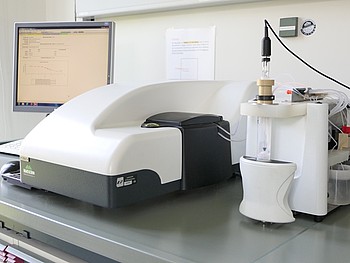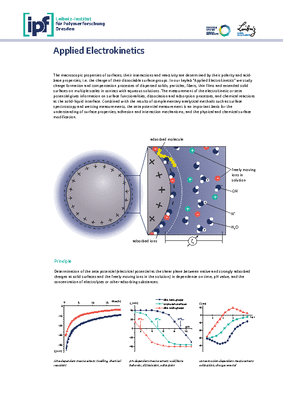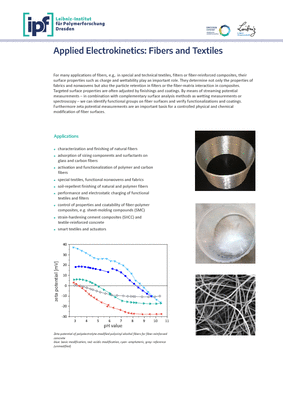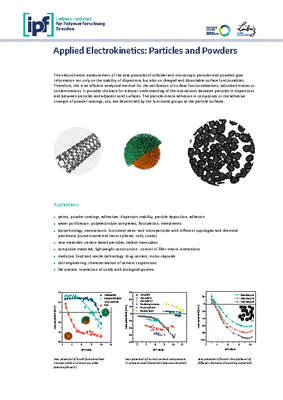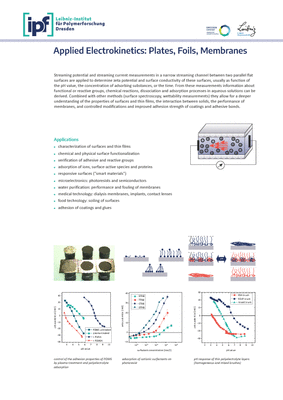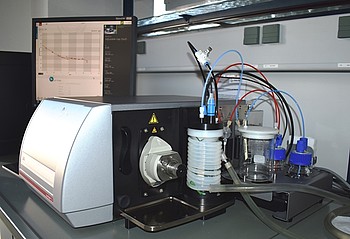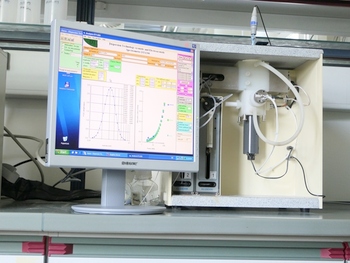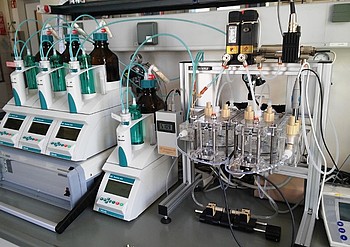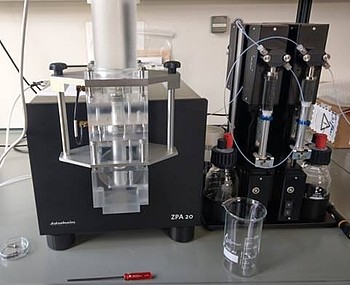Solid surfaces are charged in contact with aqueous solutions – by dissociation of functional groups and by adsorption of ions and molecules. Electrokinetic measurements determine the electrical potential at the interface to the surrounding solution, the electrokinetic or zeta potential. In our labs, we have a broad spectrum of electrokinetic techniques to determine the zeta potential of solids of different size and geometry – from nano- and microparticles, fibers and powders to thin films and extended solid surfaces. Time-, pH-, and concentration-dependent measurements give information on the acid/base behavior of surfaces, adhesion and swelling processes or chemical reactions. Additionally, the size distribution of dispersed micro- and nanoparticles can be measured.
• Grundke, K. Characterization of polymer surfaces by wetting and electrokinetic measurements - contact angle, interfacial tension, zeta potential. In Stamm, M. (ed.) Polymer surfaces and interfaces. Springer, Berlin, Heidelberg (2008) 103-138.
• Bellmann, C.; Caspari, A.; Moitzi, C.; Babick, F. Dynamische und elektrophoretische Lichtstreuung - Leitfaden zur Partikelgrößenanalyse und Zetapotentialbestimmung. Anton Paar GmbH (2018)
• Drechsler, A. ; Caspari, A. ; Synytska, A. Influence of roughness and capillary size on the zeta potential values obtained by streaming potential measurements. Surface and Interface Analysis 52 (2020) 991-995
